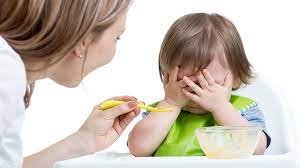
How to Help Your Kids Eat Healthy Without Calling Foods Good and Bad
shahennews
We all attach stigmas to food— intentionally or not. Those snacks? “Bad!” These snacks? “Good!” That vegetable? “Gross.” This vegetable? “Yummy!
But these judgments can have a real impact on those around us. “Food is deeply emotional and cultural,” says Morgan McGhee, M.P.H., R.D., director of school nutrition leadership at FoodCorps, a national nonprofit that connects kids to healthy food in schools. When someone categorizes a food as “weird” or “bad,” it can make others— anyone who eats that food often—feel ashamed, embarrassed or stigmatized.
McGhee is working with schools nationwide to change the conversation around food. She says she’ll never forget one particular exchange with a Latino high school student: “He said his nutrition goal for the month was ‘To eat white people’s food.’ When I asked him what that meant, he said food from Whole Foods and Trader Joe’s.” Over time, the consistent messages that this student received— that white people’s food was healthy and his culture’s food was not—had instilled “a sort of shame,” remembers McGhee.
This isn’t to say that encouraging kids to fall in love with fruits and vegetables isn’t an important goal. But food is about more than sustenance. It’s also about identity and enjoyment. If kids have been conditioned to think their cultural food is inadequate, McGhee explains, how will they make informed and confident choices about what foods will nurture their body and soul?
For example, if a child hears that white rice is “bad”—when it is a main-stay in their diet—it could cause them to question their family’s traditions or foods prepared at home. Yet in reality, it’s very possible to build a healthy eating pattern around a wide array of foods, including white rice.
“At FoodCorps, we tell kids, ‘Don’t yuck my yum,'” says McGhee. Meaning: don’t call a food yucky, because for someone else, it may be yummy. “We want to encourage students to become lifelong healthy eaters while celebrating the many ways communities define food.” Some strategies she says you can adopt at home.
1. Start the conversation
To address the food labels your kids may be using, you need to know what they are—and where they come from. “Talk with your kids about what their environment—the media, their friends—is telling them about food,” says McGhee. What did they have for school lunch today? Do they remember a food commercial they saw? What did it say, and what did it make them think about that food?
2. Be the role model
At mealtimes, choose nonjudgmental ways to describe the food—say, by talking about how the food looks, tastes, smells or even sounds, suggests McGhee. And if you use terms like “good” or “bad,” put them in the context of: What foods make you feel good? Which make you feel bad?
3. Try new dishes together
“When we’re not exposed to something from a young age, we may have a negative association with it later on,” says McGhee. To promote inclusivity, she recommends seeking out recipes for culturally and geographically diverse foods and involving kids in the shopping and cooking. If you get pushback, have patience. “Kids will try new dishes and adopt different ways of thinking about foods when they’re introduced to them consistently and with a positive attitude,” she says.






